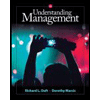
Concept explainers
1.
To determine:
The correct verb from the brackets for the given statement.
Introduction:
Verb is one of the parts of speech in English grammar. A verb in simple language means action. The verb always represents an action or a state of being. It constructs a major portion of the predicate in a sentence.
A basic necessity in a sentence is the subject-verb agreement. This simply means that one cannot say ‘I are/is’, but say ‘I am’. A singular subject in a sentence must be accompanied with a singular verb and plural subjects are to be accompanied by plural verb.
2.
To determine:
The correct verb from the brackets for the given statement.
Introduction:
Verb is one of the parts of speech in English grammar. A verb in simple language means action. The verb always represents an action or a state of being. It constructs a major portion of the predicate in a sentence.
A basic necessity in a sentence is the subject-verb agreement. This simply means that one cannot say ‘I are/is’, but say ‘I am’. A singular subject in a sentence must be accompanied with a singular verb and plural subjects are to be accompanied by plural verb.
3.
To determine:
The correct verb from the brackets for the given statement.
Introduction:
Verb is one of the parts of speech in English grammar. A verb in simple language means action. The verb always represents an action or a state of being. It constructs a major portion of the predicate in a sentence.
A basic necessity in a sentence is the subject-verb agreement. This simply means that one cannot say ‘I are/is’, but say ‘I am’. A singular subject in a sentence must be accompanied with a singular verb and plural subjects are to accompanied by plural verb.
4.
To determine:
The correct verb from the brackets for the given statement.
Introduction:
Verb is one of the parts of speech in English grammar. A verb in simple language means action. The verb always represents an action or a state of being. It constructs a major portion of the predicate in a sentence.
A basic necessity in a sentence is the subject-verb agreement. This simply means that one cannot say ‘I are/is’, but say ‘I am’. A singular subject in a sentence must be accompanied with a singular verb and plural subjects are to be accompanied by plural verb.
5.
To determine:
The correct verb from the brackets for the given statement.
Introduction:
Verb is one of the parts of speech in English grammar. A verb in simple language means action. The verb always represents an action or a state of being. It constructs a major portion of the predicate in a sentence.
A basic necessity in a sentence is the subject-verb agreement. This simply means that one cannot say ‘I are/is’, but say ‘I am’. A singular subject in a sentence must be accompanied with a singular verb and plural subjects are to be accompanied by plural verb.
6.
To determine:
The correct verb from the brackets for the given statement.
Introduction:
Verb is one of the parts of speech in English grammar. A verb in simple language means action. The verb always represents an action or a state of being. It constructs a major portion of the predicate in a sentence.
A basic necessity in a sentence is the subject-verb agreement. This simply means that one cannot say ‘I are/is’, but say ‘I am’. A singular subject in a sentence must be accompanied with a singular verb and plural subjects are to be accompanied by plural verb.
7.
To determine:
The correct verb from the brackets for the given statement.
Introduction:
Verb is one of the parts of speech in English grammar. A verb in simple language means action. The verb always represents an action or a state of being. It constructs a major portion of the predicate in a sentence.
A basic necessity in a sentence is the subject-verb agreement. This simply means that one cannot say ‘I are/is’, but say ‘I am’. A singular subject in a sentence must be accompanied with a singular verb and plural subjects are to be accompanied by plural verb.
8.
To determine:
The correct verb from the brackets for the given statement.
Introduction:
Verb is one of the parts of speech in English grammar. A verb in simple language means action. The verb always represents an action or a state of being. It constructs a major portion of the predicate in a sentence.
A basic necessity in a sentence is the subject-verb agreement. This simply means that one cannot say ‘I are/is’, but say ‘I am’. A singular subject in a sentence must be accompanied with a singular verb and plural subjects are to be accompanied by plural verb.
9.
To determine:
The correct verb from the brackets for the given statement.
Introduction:
Verb is one of the parts of speech in English grammar. A verb in simple language means action. The verb always represents an action or a state of being. It constructs a major portion of the predicate in a sentence.
A basic necessity in a sentence is the subject-verb agreement. This simply means that one cannot say ‘I are/is’, but say ‘I am’. A singular subject in a sentence must be accompanied with a singular verb and plural subjects are to be accompanied by plural verb.
However, the agreement rule does not apply to sentences which are in simple past tense. For example, Mary talked to me and they talked to me both have the same verb agreement.
10.
To determine:
The correct verb from the brackets for the given statement.
Introduction:
Verb is one of the parts of speech in English grammar. A verb in simple language means action. The verb always represents an action or a state of being. It constructs a major portion of the predicate in a sentence.
A basic necessity in a sentence is the subject-verb agreement. This simply means that one cannot say ‘I are/is’, but say ‘I am’. A singular subject in a sentence must be accompanied with a singular verb and plural subjects are to be accompanied by plural verb.
Want to see the full answer?
Check out a sample textbook solution
- Edison Tools Co. purchased equipment on January 1, 2018 for $61,800. Additional costs included freight charges of $1,900 and installation and foundation expenses of $7,300. The estimated salvage value at the end of its 6-year useful life is $13,000. What is the amount of accumulated depreciation on December 31, 2020, if the straight-line method of depreciation is used?arrow_forwardProvide Answerarrow_forwardGeneral accountingarrow_forward
- Pay in taxes for this employee benefit ? Financial accountingarrow_forwardCascade Retailers had cash sales of $62,480, credit sales of$45,760, sales returns and allowances of $9,310, and sales discounts of $6,400. What is the company's net sales for this period?arrow_forwardHow can I solve this financial accounting problem using the appropriate financial process?arrow_forward
- Calculate variablecost and contribution margin ration ? Financial accountingarrow_forwardRequired Information [The following Information applies to the questions displayed below.] Sparrow Company uses the retail Inventory method to estimate ending Inventory and cost of goods sold. Data for 2024 are as follows: Beginning inventory Purchases Freight-in Purchase returns Net markups Net markdowns Normal spoilage Abnormal spoilage Sales Sales returns Cost 97,000 Retail $ 187,000 363,000 587,000 9,700 7,700 11,700 16,700 12,700 3,700 5,546 8,700 547,000 10,700 The company records sales net of employee discounts. Employee discounts for 2024 totaled $4,700. 2. Estimate Sparrow's ending Inventory and cost of goods sold for the year using the retail Inventory method and the conventional application. Note: Round Cost-to-retall percentage to 2 decimal places and final answers to the nearest whole dollar amount. Answer is complete but not entirely correct. Conventional application Estimated ending inventory at retail $ 705,200 x Estimated ending inventory at cost S 417,878 x Estimated…arrow_forwardI am looking for the correct answer to this general accounting question with appropriate explanations.arrow_forward
 Understanding Management (MindTap Course List)ManagementISBN:9781305502215Author:Richard L. Daft, Dorothy MarcicPublisher:Cengage Learning
Understanding Management (MindTap Course List)ManagementISBN:9781305502215Author:Richard L. Daft, Dorothy MarcicPublisher:Cengage Learning Management, Loose-Leaf VersionManagementISBN:9781305969308Author:Richard L. DaftPublisher:South-Western College Pub
Management, Loose-Leaf VersionManagementISBN:9781305969308Author:Richard L. DaftPublisher:South-Western College Pub


